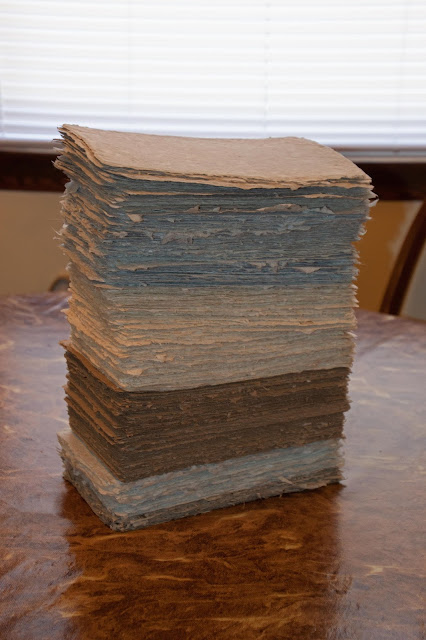With Covid-19 making it impossible to go to remote workshops, my favorite venue for workshops like this, Shake Rag Alley, converted one of their in-person session to an online experience. The artist was Sara Post from Davis, CA, and the class was called Surface History: Layered Collage Paintings.
Here is the course description: "In this workshop we’ll make a variety of collage papers and use them in beautiful additive and subtractive collages. We’ll collage directly on to flat or cradled wood supports using Varathane or acrylic gloss medium as an adhesive. With the addition of house paint and acrylic paint we’ll blend collage layers to create collaged paintings. A top sealing layer of acrylic matte medium or cold wax medium completes the piece. We’ll explore three collage techniques—all using various combinations of handmade collage papers, tissue papers, adhesives, house paint and acrylic paint which may be added, subtracted, scraped, sanded and painted over to create beautiful surface layers."
We began our workshop making various styles of paper for collage. My big take away was a combination of rice paper and India ink. All of these papers were fodder for creating the four pieces in the workshop.
When we turned to our substrates, we worked on 12"H x 12"W x 3/4"D cradled boards.
Before Everything Succumbed to Regret
This piece started as collage of black and white papers
The painting technique (sample by Laura Carr) that we were taught is where I had an artistic roadblock. This style of over-painting was the goal (above).
I only got this far with that. I just could not paint over my collage. The red marks below are as far as I could take it.
The abstract nature of Sara Post's style and teaching is a mystery to me. That being said, I see everything Sara taught as a wonderful creation of a substrate for the kind of collage I like to do. Before the class was over I got this far.
After class was over, I continued to work on the layers of this piece including the inclusion of an object.
And thus we have, Before Everything Succumbed to Regret.
In Search of Vanished Blood
The next piece began by using the gelli plate papers we created. I then painted in as much of the piece as I could.
During the class this is what I did with mine.
After class I continued to work on the piece.
Of all the objects added on all these projects, I like this one best. Don't tell the others.
And thus we have, In Search of Vanished Blood.
The Vision of the Old Memory
The next piece began as a black tissue paper substrate. The object was to tear into the substrate for a collage. I really liked this process and felt mine created a frame for a collage.
After working on this after class, and adding some objects, I had this.
And thus we had, The Vision of the Old Memory.
Power On and Off
The last piece was started with layers of tissue paper on the substrate. During class I layered on the mixed media and had this.
After class I had time to get my paints out and begin to finish.
After adding some wood trim pieces I felt like it was done.
And thus we have Power On and Off.
I want to thank Shake Rag Alley and Sara Post for making all this possible in these troubled times.





















































